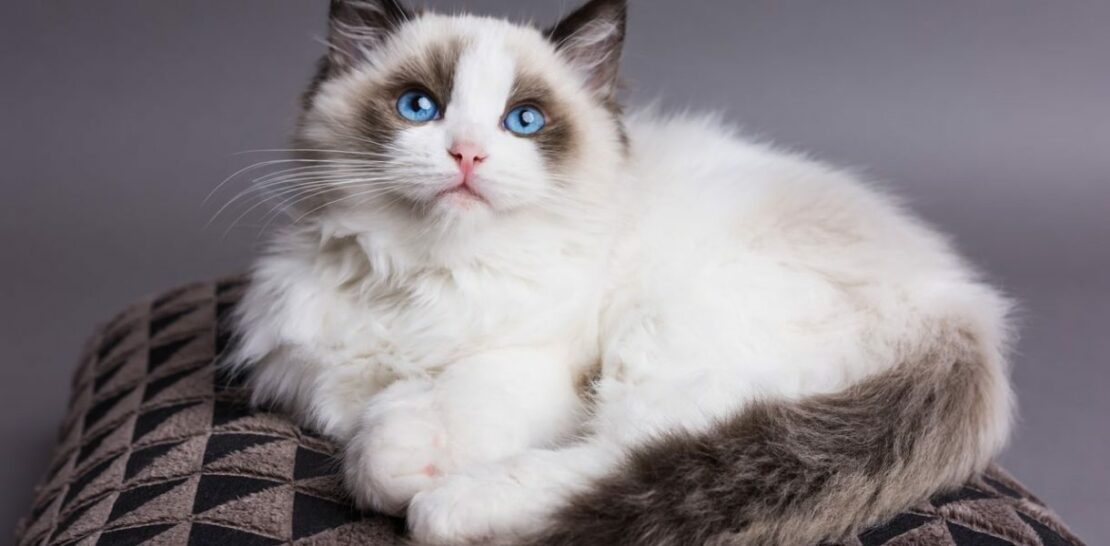With their captivating blue eyes, luxurious fur, and an irresistibly gentle and affectionate nature, the Ragdoll cat breed has captured the hearts of cat lovers around the globe.
These wonderful feline companions are known for their endearing character, making them the perfect addition to any household.
In this exhaustive article, we will delve into the intricate details of the Ragdoll cat breed’s origin, physical characteristics, temperament, and health concerns, as well as the best practices for grooming and caring for these beautiful creatures.
The Intriguing Origins of the Ragdoll Cat Breed
The Ragdoll’s journey to becoming a beloved cat breed is filled with fascinating stories and unique circumstances. Developed in the 1960s, their captivating charm can be traced back to their intriguing beginnings.
- The breed’s founder: The Ragdoll cat breed owes its existence to a woman named Ann Baker, a breeder from Riverside, California. Baker’s passion for cats led her to develop a breed that would showcase the qualities she desired – a large, affectionate, and gentle companion.
- The foundation cats: The cornerstone of the Ragdoll breed was Josephine, a semi-feral white longhaired cat with unique markings. Josephine had several litters with different tomcats, but it was the kittens from her pairing with a seal point Birman-like cat and a black Burmese-like male that would become the foundation of the Ragdoll breed.
- Controversy and trademarking: In an unusual move, Ann Baker decided to trademark the name “Ragdoll” and create a breeding franchise. This led to disputes within the cat breeding community, ultimately resulting in a split between those who adhered to Baker’s strict breeding guidelines and those who chose to develop the breed independently.
- International recognition: Despite the controversies, the Ragdoll breed gained popularity and recognition. In 1993, the breed was officially recognized by The International Cat Association (TICA), and later by the Cat Fanciers’ Association (CFA) in 2000.
Physical Characteristics of the Ragdoll: Grace and Beauty
The Ragdoll’s physical features contribute to its unique charm. This breed is known for its large size, captivating blue eyes, and plush coat. The following are some of the distinct physical traits that make the Ragdoll cat breed truly exceptional:
- Size and weight: Ragdoll cats are among the largest domestic cat breeds, with males weighing between 15 to 20 pounds and females weighing 10 to 15 pounds. Their substantial size is complemented by a strong, muscular body.
- Eyes and facial features: One of the most striking features of the Ragdoll breed is their large, oval-shaped blue eyes. These beautiful eyes, combined with their sweet expressions and gently curved forehead, give the breed its signature loving gaze.
- Fur and color patterns: Ragdoll cats have a semi-long, silky coat that is soft to touch and requires regular grooming. The breed features a variety of color patterns, including seal, blue, chocolate, lilac, red, and cream, as well as the distinct pointed pattern that is a hallmark of the breed.
- Unique traits: A couple of unique traits set the Ragdoll breed apart from other cats. One is their tendency to go limp when picked up, much like a ragdoll, giving the breed its name. Another interesting characteristic is their delayed maturation, with Ragdoll cats taking up to four years to reach their full size and color.
A Gentle, Endearing Temperament: The Heart of the Ragdoll Cat Breed
The Ragdoll’s most endearing quality is, without a doubt, its loving and gentle temperament. These cats are known for their affectionate nature, making them the perfect companions for families, singles, and seniors alike. Let’s explore the qualities that make the Ragdoll cat breed’s character truly special:
Sociability and affection: Ragdoll cats are known for their love of human company and affectionate nature. They often follow their owners around the house, seeking attention and companionship. This sociable breed gets along well with children and other pets, makingthem a wonderful addition to any family.
Intelligence and trainability: Ragdolls are an intelligent breed, known for their ability to learn tricks and commands. With their strong desire to please their owners, they are often considered one of the most trainable cat breeds. This intelligence also lends to their curiosity, as they enjoy exploring their surroundings and engaging in interactive play.
Gentleness and adaptability: Perhaps the most well-known aspect of the Ragdoll’s temperament is their gentle nature. These cats are often described as “puppy-like” in their behavior, as they are not only affectionate but also easygoing and adaptable. They can adjust well to new environments and are generally not deterred by changes in routine or the presence of new people or pets.
Vocalization and communication: While Ragdoll cats are not known to be overly vocal, they do have a soft, distinctive voice that they use to communicate with their owners. They may chirp or meow to express their desires or needs, but their vocalizations are typically not as loud or frequent as those of other breeds.
Health, Grooming, and Care: Ensuring a Happy, Healthy Ragdoll
As with any cat breed, Ragdolls require proper care and grooming to maintain their health and happiness. By understanding their unique needs, owners can ensure their feline friend thrives in their home.
- Health concerns and preventative care: The Ragdoll breed is generally healthy, but there are a few genetic predispositions that owners should be aware of. Hypertrophic cardiomyopathy (HCM), a common heart condition in cats, can be found in Ragdolls, as well as a predisposition to kidney and bladder issues. Regular veterinary check-ups, vaccinations, and preventative care are essential to maintaining their health.
- Grooming and coat maintenance: Ragdoll cats require regular grooming to maintain their luxurious, semi-long coat. A thorough brushing at least twice a week can help prevent tangles and matting while also removing loose hair and reducing hairballs. Additionally, owners should trim their Ragdoll’s nails and clean their ears as needed to promote overall hygiene.
- Diet and nutrition: A balanced and nutritious diet is key to keeping a Ragdoll cat healthy and happy. Owners should consult with their veterinarian to determine the best food and feeding schedule for their specific cat, taking into account factors such as age, weight, and activity level.
- Exercise and mental stimulation: Although Ragdoll cats are not known for their high energy levels, they still require regular exercise and mental stimulation to maintain their health and happiness. Interactive toys, puzzle feeders, and playtime with their humans can help keep these intelligent and curious cats engaged and active.
In conclusion, the Ragdoll cat breed is a true gem in the world of feline companions. With their gentle, endearing character and striking physical features, they have won the hearts of cat lovers everywhere. By understanding and caring for their unique needs, owners can cherish the love and affection these wonderful cats have to offer, creating a bond that lasts a lifetime.




